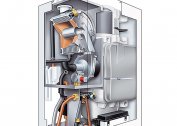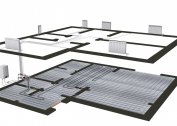A radiator is a device for liquid heating a room. Today, the market for heating appliances has a large number of different models of radiators: aluminum heating batteries, bimetallic, steel panel radiators, etc.
The need for additional heating
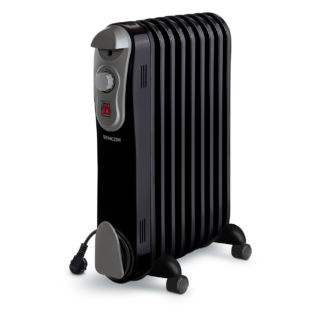 Despite the fact that the 21st century is now in the courtyard, the heating system of most residential apartment buildings is still far from perfect, and leaves much to be desired, especially during the winter cold season. Residents of private sectors in this regard are much simpler, most of them have AOGW, and they themselves regulate the desired temperature in the house: it is cold on the street - added heating, hot - dimmed or completely turned off. Convenient - whatever one may say! What can not be said about the heating system of apartment residents: how much technical services have allocated, rejoice in that. And the fact that this is not quite enough, and the temperature in apartments sometimes barely reaches 15 degrees Celsius, as we know, few people care. Yes! People partially learned to retain heat in their "nests." This was made possible thanks to modern technologies that are widely striding forward: all kinds of heaters, from the abundance of the assortment of which one's eyes widen; plastic windows (their tightness and reliability also plays an important role in maintaining heat in the house). But sometimes this is not enough.
Despite the fact that the 21st century is now in the courtyard, the heating system of most residential apartment buildings is still far from perfect, and leaves much to be desired, especially during the winter cold season. Residents of private sectors in this regard are much simpler, most of them have AOGW, and they themselves regulate the desired temperature in the house: it is cold on the street - added heating, hot - dimmed or completely turned off. Convenient - whatever one may say! What can not be said about the heating system of apartment residents: how much technical services have allocated, rejoice in that. And the fact that this is not quite enough, and the temperature in apartments sometimes barely reaches 15 degrees Celsius, as we know, few people care. Yes! People partially learned to retain heat in their "nests." This was made possible thanks to modern technologies that are widely striding forward: all kinds of heaters, from the abundance of the assortment of which one's eyes widen; plastic windows (their tightness and reliability also plays an important role in maintaining heat in the house). But sometimes this is not enough.
It can be argued that on especially cold winter days, more than 50% of people always used and still use heating radiators to raise the temperature in various kinds of rooms. It is about them that we will be talking.
People have resorted to electric radiators for a long time, only before they were unsafe aluminum reflectors standing on the floor with a red-hot spiral wound on a ceramic base, and now this is a huge selection of compact, convenient, and, most importantly, safe heaters.
Varieties of electric radiators
There are four types of electric radiators. Some of them are mainly used in houses, apartments and small cottages, while others are especially popular in rooms with a large area (hangars, warehouses, etc.).
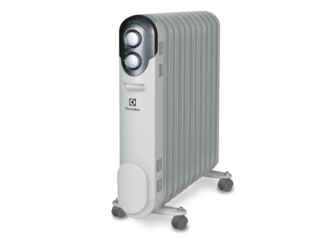 Electric oil coolers - It’s they who help the majority of residents of apartment buildings to go home, in a fierce winter cold. They are a close copy of a steel panel radiator: their appearance and principle of operation are virtually identical. When installing such an electric radiator, the most reasonable place will be to place it near the window, but still this is not important. If you install it in any other place convenient for you, it will not get worse or less warm.
Electric oil coolers - It’s they who help the majority of residents of apartment buildings to go home, in a fierce winter cold. They are a close copy of a steel panel radiator: their appearance and principle of operation are virtually identical. When installing such an electric radiator, the most reasonable place will be to place it near the window, but still this is not important. If you install it in any other place convenient for you, it will not get worse or less warm.
Fan heaters. The power consumed by these types of heating appliances is small and this is their most important advantage. They have a compact and attractive appearance, light weight. Another, quite significant requirement that these models of electric radiators meet is complete safety. It is simply impossible to get burned about them. This merit of the material from which they are made, prevents heat.
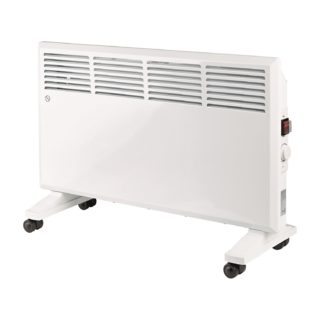 In electric oil fans and fan heaters, an insanely convenient function has appeared relatively recently: temperature controller. It allows you to heat the room to a certain (set by you temperature) and holds it. Of course, this function is quite useful: set the desired temperature and you can safely go about your business (completely without worrying that it will be too cold, or, conversely, hot); or even go to bed (there is no need to get up at night to constantly regulate the operation of the heater).
In electric oil fans and fan heaters, an insanely convenient function has appeared relatively recently: temperature controller. It allows you to heat the room to a certain (set by you temperature) and holds it. Of course, this function is quite useful: set the desired temperature and you can safely go about your business (completely without worrying that it will be too cold, or, conversely, hot); or even go to bed (there is no need to get up at night to constantly regulate the operation of the heater).
Do not worry about your safety, as most heaters are equipped with automatic protection (relay), the responsibility of which is to turn off automatically when overheating. They also turn off if dropped. Usually they have a “magic” button or sensor below, which reacts to the surface where it is installed. This is called an automatic rollover shutdown system. When buying an oil radiator, you can easily check it: it is not necessary to drop the device, it will be enough just to slightly raise it, and the protection system should probably work (you will hear how the device turns off).
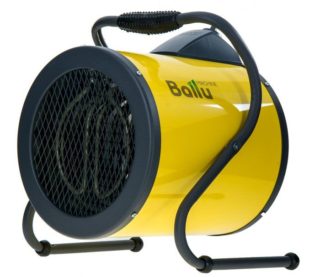 Thermal electric guns and convectors. They are mainly used in large rooms. Such types of heating radiators require connection to a three-phase current. Accordingly, using them in small areas will be less economical: the amount of electricity consumed will not justify the heat received, unlike fan heaters and oil radiators.
Thermal electric guns and convectors. They are mainly used in large rooms. Such types of heating radiators require connection to a three-phase current. Accordingly, using them in small areas will be less economical: the amount of electricity consumed will not justify the heat received, unlike fan heaters and oil radiators.
Before buying such a device you need and everywhere useful (from a small summer cottage and schools to warehouses), you need to evaluate the area of the room in which you would like to install it. And only then to determine the type of model of an electric radiator.
Do not forget to watch the heater for the first time after purchase. If you notice any flaws, or unstable operation, you should immediately return to the store or exchange it for a working one.
The purchase of an electric radiator is simple, but this simplicity is no less important than, say, buying a TV. The quality and long life of any device is a natural desire of every consumer.

